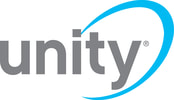Dispensing Progressives (Part 3): Helping Multifocal Loyalists Embrace a Change for the Better3/26/2021
This is part three in our series on dispensing progressive lenses. In part one we discussed how to match a progressive lens to a patient’s lifestyle and part two revealed five surefire tips for presenting progressive benefits to patients. In the third installment, we’ll be delving into the art and science of converting multifocal diehards into progressive lens loyalists.
Change is hard. Whether it’s a personality trait, a diet, or a brand of running shoes, we’re more comfortable with consistency. It feels safe. But overcoming the fear of change can, and often does, open doorways to life-altering improvements.
Beyond the fear factor, we also have an innate need to defend past choices to prove to ourselves they were the correct ones. If a patient has been wearing multifocal lenses for a while, convincing them to try something new can be challenging. But, equipped with the following optician-endorsed advice, you can successfully help them understand the benefits of changing things up.
A prescription from an OD is no different. It’s a determination from a trained medical professional to improve a person’s visual well-being. That’s why it’s ultra-important to position a move from a multifocal to a progressive lens as being “prescribed,” not “recommended,” by the doctor.
“I see that Dr. Flores has prescribed a progressive lens to help with your current complaints around visual strain from reading with store bought readers. Your new progressive lenses will not only eliminate this strain but help you see clearly at all distances without pesky lines or distortions” People seek out or return to an eye doctor due to confidence in the OD’s ability to fix what ails them visually. Therefore, connecting the switch in lenses to the doctor’s prescription is probably the easiest and most effective methods for gaining acceptance and alleviating anxiety about moving from a multifocal to a progressive. When a prescription from the doctor alone is not enough, there are several ways you can fortify the prescribed solution as an optician. Connecting the switch in lenses to the doctor’s prescription is probably the easiest and most effective methods for gaining acceptance and alleviating anxiety about moving from a multifocal to a progressive."
Are they concerned about costs?
Has anyone recommended progressives to them before? If they tried progressives previously, why didn’t they like them? If they could improve something about their multifocal, what would it be? Digging deeper to gather valuable information like this takes time and effort, but the gems you uncover could prove priceless when trying to influence a change. Many of the factors anchoring a person to their multifocal lenses can easily be dislodged with a few revealing answers to these types of questions. Digging deeper to gather valuable information like this takes time and effort, but the gems you uncover could prove priceless when trying to influence a change."
Understanding all the nuances of features and benefits could take an entire marketing course. For the sake of time, we’ll grossly oversimplify things and say that features speak more to the technical product attributes (ex., fully compensated power in every gaze direction), whereas benefits hit at the emotional rewards of using the product (ex., the unforgettable experience of being able to clearly see a child’s first goal from anywhere on the sideline).
Take a look at the following Starbucks commercial:
Notice there’s not a single mention of coffee. Why? Because they’re not selling coffee. They’re selling the emotional benefits of spending more quality time with family, your pet, or yourself—all made possible by kicking off your day with the implied help of a grande caffeine buzz.
You can do this when encouraging a switch to a progressive lens. We’re not suggesting you become a master marketer overnight. It’ll take some practice to nail the technique down. But even if it’s not executed with the scripted grace of a Starbucks ad, speaking to benefits over features could be the nudge your multifocalist needs to give a progressive lens a chance. And let’s face it, the technical features are going to fly over 99.9% of people’s heads. OFFER A PAIN RELIEVER...OR A PAIN
An obvious example of this approach would be when a person indicates how much they dislike the appearance of their lined bifocal. Insecurity about appearance is a definite pain point. A progressive is an obvious aesthetic remedy in this situation.
Other common multifocal pains that can be alleviated with a progressive lens include harsh transitions between near and far zones, eye strain, and neck pain from having to move their head instead of being able to move their eyes. What about patients who aren’t reporting any problems with their multifocals? There are often cases where patients are having issues but not connecting them back to their lenses. In these instances, it can be helpful to run a quick check to see if they’re experiencing common complaints among other multifocal wearers. It’s recommended not to directly label these as multifocal issues during the conversation because a long-time wearer might choose to answer untruthfully rather than risk changing to a new lens or invalidating their longstanding commitment to their current design. Keep in mind, the patient experience is always priority number one. If they’re happy with their current lens and it’s providing a great visual experience, discuss the benefits of a progressive and remind them it was a doctor’s prescribed lens, but don’t sink your teeth in like a dog with lockjaw. Otherwise you risk becoming the pain they need to remedy. Honing that skill to where you can pick up on pain points about a person’s current visual experience affords you opportunities to address specific ways in which a progressive lens alleviates that pain or solves a problem."
That’s the feeling you want to create when convincing someone that a move to a progressive lens is the right one for them.
Once again, executing this comes down to knowing your patient (a common theme throughout this article). Look for hobbies, pastimes, or job functions that you’ve picked up in conversations or read on a questionnaire. Then think of how a progressive lens might make those things that much easier, faster, or more rewarding than possible with the person’s current multifocal. “As an avid golfer, you’re going to love how a progressive lens allows you to smoothly and seamlessly track the ball from the tee to the center of the fairway 250 yards away. Add light-reactive lens technology and you’ll kick it up a notch with better contrast and comfortable vision in bright conditions. I wouldn’t be surprised if this package took a couple strokes off your game.” Painting a picture in your patient’s mind of how their life could be better is a very strong motivator to turn that possibility into reality. Painting a picture in your patient’s mind of how their life could be better is a very strong motivator to turn that possibility into reality."
Every patient has their own experience with adaptation. Some adapt quickly. Others take a little longer. For some, the adaptation symptoms are more noticeable.
For others, they’re a slight bump on the road to better vision. This is crucial to mention if your attempted convert plays the adaptation card. Progressive lens technology plays a pivotal role too. As technology continues to improve, so does the ability to quell and quicken the adaptation process. More advanced designs are gaining a reputation for drastically diminishing the adaptation period. Some are even earning a positive track record for overcoming non-adapts. With these points in mind, the following recommendations can help you in a variety of different circumstances:
More advanced designs are gaining a reputation for drastically diminishing the adaptation period. Some are even earning a positive track record for overcoming non-adapts."
If you remember the movie Pretty Woman, you’ll likely recall the scene where Julia Roberts goes dress shopping looking a little less than dapper but armed with enough cash to single-handedly put the store in the black. The salespeople at the store take one look at her, determine she’s not of the store’s high standards, and rudely suggest that she take her business elsewhere. Roberts’ character returns to the store later, transformed and weighed down with bags from her recent spree at a local competitor
Of course, you’re not going to dismiss a customer based on appearance, but the example highlights what can happen when you assume what a customer is willing or able to pay beyond their coverage limits.
As discussed earlier, lead by offering a solution that provides the best vision possible and work back from there if it doesn’t fit a person’s budget. Starting at the top and sliding down into a mid-range design with a lower out-of-pocket cost is also a more attractive proposition than starting at the base model and trying to convince someone to pay more. Starting at the top and sliding down into a mid-range design with a lower out-of-pocket cost is a more attractive proposition than starting at the base model and trying to convince someone to pay more.
Lenses aren’t like meals out. You don’t just enjoy a one-hour experience and sign the bill. Your patients will primarily be wearing their progressives all day every day, so the value and the cost is spread out over time.
Let’s say a patient’s coverage can put them in a premium design for around $200 out of pocket. You could reposition that $200 cost as follows: “With your upgrade to a premium progressive lens, you’re only looking at $200, which works out to about 50 cents a day to enjoy much better vision, alleviate the discomfort you’ve been experiencing, and lose the lines you said you didn’t like in your bifocals.” While some patients will only shell out what their insurance pays for, you might be surprised by how people can put price into perspective when it’s framed this way. And that can help you overcome the budget barrier with a multifocalist. Lenses aren’t like meals out. You don’t just enjoy a one-hour experience and sign the bill. Your patients will primarily be wearing their progressives all day every day, so the value and the cost is spread out over time." Go Forth with Confidence!
In closing, we want to reiterate that the goal is always to provide each patient the best visual experience through doctor “prescribed” solutions that cater to their specific needs. The aforementioned tips are tried and trusted for helping people embrace a change for the better from a multifocal to a progressive lens. They can be mixed, matched, or used independently based on your preference. Regardless of how you use them, use them with confidence.
0 Comments
Your comment will be posted after it is approved.
Leave a Reply. |
Don't Miss Out!
Subscribe to the In_Sight Newsletter to get the latest blog posts delivered directly to your inbox. Popular Posts
5 Digital Eye Strain Hacks to Enhance Patient and Practice Experience Changing Your Preferred Progressive Lens: A Blueprint for A Successful Switch (Part I) How Unity Via Helped this New Jersey Practice Overcome Change Anxiety Categories
All
|
©2024 Plexus Optix, Inc. All rights reserved.
Unity, SunSync, and TechShield are registered trademarks of Plexus Optix, Inc. All other brands or marks are the property of their respective owners.
Use of these marks, names, logos, and/or brands does not imply endorsement.
Unity, SunSync, and TechShield are registered trademarks of Plexus Optix, Inc. All other brands or marks are the property of their respective owners.
Use of these marks, names, logos, and/or brands does not imply endorsement.
Website by Eyefinity










 RSS Feed
RSS Feed
